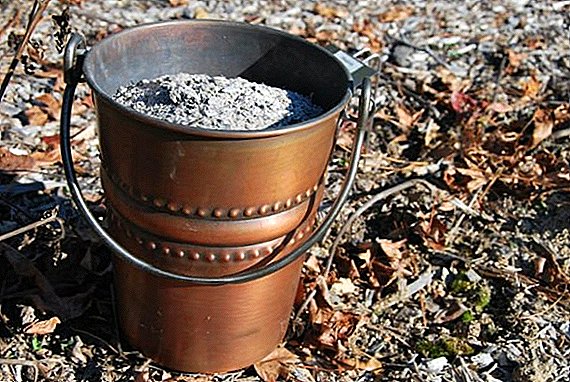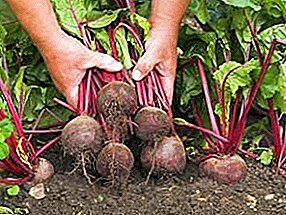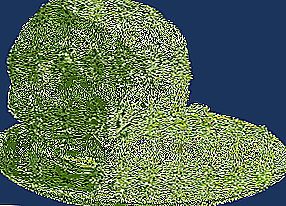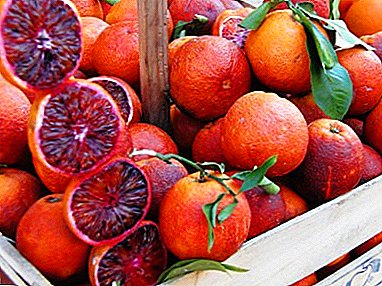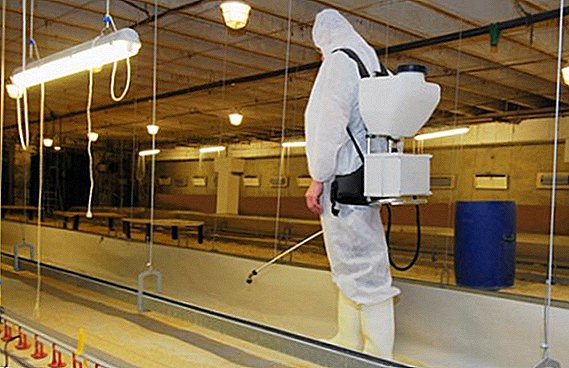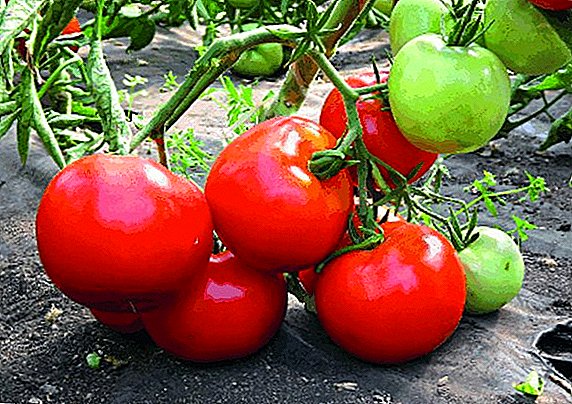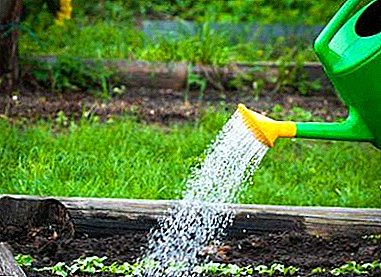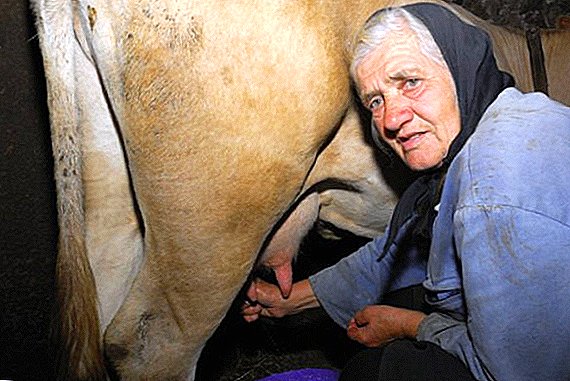 A good dairy cow on the farm is an invaluable source of healthy and tasty milk, cottage cheese, butter, etc.
A good dairy cow on the farm is an invaluable source of healthy and tasty milk, cottage cheese, butter, etc.
However, in order for the productivity of the animal to be high and stable, you need to know how to choose the right dairy cow and what you should pay attention to first of all. The features of this choice will be discussed later in the article.
The best dairy breeds
Dairy breeds of cattle are leaders in productivity and efficiency among all animals that give milk. You can judge the performance of the animal when choosing, carefully studying its pedigree. Today, there are several dozens of high-milk breeds that differ in appearance, proportions and milk yield. 
The table shows the main characteristics of dairy breeds and their milk yield per year.
| Breed | Average annual yield, kg | Milk flow rate, kg / min | Milk fat content,% |
| Black and motley | 5500-8500 | 1,2-1,4 | 3,4-4,15 |
| Golshtinsky | 5500-7500 | Up to 2.5 | Up to 3.6 |
| Kholmogorskaya | 3500-8000 | 1,1-1,3 | 3,6-4,0 |
| Yaroslavskaya | 3500-6000 | Up to 1.6 | 3,4-3,7 |
| Red steppe | 3500-4500 | 1-1,2 | 3,2-5,3 |
| Ayrshire | 6000-7000 | Up to 2.0 | 3,8-4,3 |
| Jersey | 4300-5700 | Up to 1.8 | 5,34-7,0 |
| Red-motley | 5000-6500 | Up to 1.8 | 3,9 |
| Istobenskaya | 3700-4000 | 1,6-1,8 | 3,4-5,5 |
Important! It should be noted that the volume of milk that a cow gives, its fat content and nutritional value will depend not only on the breed, but also on the diet of the animal, the conditions of its housing and care.
How to choose a good dairy cow when buying
The milk productivity of cattle is influenced by a number of aspects, among which the most significant are: physiology, age, diet and maintenance. 
According to external signs
First of all, when choosing a good, high-quality female of quality, it is recommended to pay attention to its exterior qualities and proportions:
- Head. The head of the animal has an elongated shape, dry and light. On it expressive big eyes flaunt, a little "bulging." The ears are very thin, well translucent, almost bald on the inside, and covered with a small amount of hairs on the outside. The animal has a medium-sized horn, thinning at the base.
- Neck. The dairy cow is distinguished by a rather long neck, on which numerous folds and a medium sized breast-plate appear.
- Leather. The skin of representatives of the dairy breeds elastic, elastic, easily formed into folds, have no fat deposits.
- Torso. The animal is characterized by a large body with strong bones, but poorly developed musculature. Externally, because of the round belly, the body has a barrel shape. The chest is powerful and wide, there are wide intercostal grooves, which indicates a developed pulmonary and digestive system. The tail of the cow is not thick and long, the backside is slightly raised.
Important! If the cow’s chest has a flat shape, this may indicate a risk of developing tuberculosis or other diseases associated with the lungs.As for the proportions, a good milk cow has a slightly angular shape. And if you look visually, then her body, at the expense of a well-developed rear part, expands to the bottom, creating a conditional triangle. At the same time, a highbreeding female should not be similar to a bull.

According to the age
As a rule, the cow shows the maximum milk yield after 5-6 calving. In the first heifers and females who gave birth twice, the productivity is low. Therefore, before acquiring an animal, you should know its age. This can be done as the teeth and horns.
 On the horns. The number of rings on the horns of a cow indicates the number of her pregnancies. The first pregnancy in the female occurs in two years. From this you can calculate the approximate age: count the number of rings and add to them a deuce.
On the horns. The number of rings on the horns of a cow indicates the number of her pregnancies. The first pregnancy in the female occurs in two years. From this you can calculate the approximate age: count the number of rings and add to them a deuce.
To determine the age of the chicks, you can measure the length of the horns. It is known that the female’s horns grow every month by 1 cm and this lasts up to 1.5 years. Thus, by measuring the length of the horns, you can find out the age of the animal in months.
Important! If the cow is already old, then the rings on the horns can be erased. Also, the absence of clear rings can be observed when the animal has been sick for a long time and has received less of the necessary nutrients.
 In the teeth. You can also find out the approximate age of the animal by examining its teeth. Over a lifetime, a cow grows 32 teeth, of which 8 incisors located on the lower part of the jaw and 24 molars.
In the teeth. You can also find out the approximate age of the animal by examining its teeth. Over a lifetime, a cow grows 32 teeth, of which 8 incisors located on the lower part of the jaw and 24 molars.
At the same time, at a certain age, the incisors change: the hooks, which are in the middle, change in 14-20 months, the average incisors - in 18-28 months, the outer middle cutters - in 24-36 months and the angular - in 35-45 months.
It should be noted that the incisors are erased individually, depending on the food that the animal eats. Constants begin to wear out gradually in 3-5 years. In 7-10 years they get round shape, and by 8-11 they become similar to a quadrilateral. By the age of 15, the teeth are round again. After 16 years, the incisors are almost completely erased, in their place hemp forms, which soon begin to fall.
Did you know? The cow has a well-developed sense of time, so it is very important to organize her daily routine and stick to it. Any deviation from the routine will cause concern to the animal and may cause a drop in milk yield.
By udder
Udder is one of the most important organs of the dairy cow. Animals with high rates of productivity are characterized by a volume, hairy udder-shaped bowl or bath-like form. In this case, all quarters of the udder, as well as the veins on the sides of the abdomen are well developed.
On palpation, the udder is grainy and slightly lax. The presence of any seals on the skin, bruising. Experts advise not to choose a female with a very large, sagging udder, because it will prevent the animal from moving. Nipples have a cylindrical shape, about 8 cm long, widely spaced relative to each other.
Before buying, you need to milk the cow a little. If milk flows out very tightly, slowly or does not flow at all, this may indicate the development of mastitis or inflammation. 
For health
When choosing a cow, it is recommended to check her health condition. Evaluation begins with a visual inspection: the shade of the mucous membrane of the eyes should be normal, without redness and bruising, nose - without purulent discharge, moist, skin - smooth, elastic, without ulcers, pustules, udder - without inflamed areas, seals.
Important! A weakened cow behaves restlessly, its skin looks emaciated, it has no appetite, its lower jaw is slightly shortened.
It is equally important to measure the temperature of the animal, listen to the pulse and calculate the frequency of respiratory movements. Normally, these indicators, depending on age, are:
- in half a year: temperature - 38.7, pulse (beats per minute) - 70, respiration rate (beats per minute) - 31;
- in 1 year: temperature - 38.4, pulse - 59, respiration rate - 20;
- in 1.5 years: temperature - 38.3, pulse - 57, respiration rate - 18;
- adults: temperature - 38.3, pulse - 67, respiration rate - 21.

According to national signs
There are also folk signs of choosing a good dairy cow. Of course, most of them give only a few assumptions about the productivity of an animal, and some for specialists are considered absurd.
Nevertheless, many, buying a cow, are guided by popular signs:
- the presence of a cow 8 nipples speaks of her good milk production;
- if there is a deep fossa between the horns, then the animal has a high milk production;
- a large amount of sulfur in the ears indicates a high fat content of milk;
- it is considered to be considered as a sign of excellent milkings a drop on the head;
- if the tail of the animal at the end has a rounded shape and has a yellowish color, then the milk will have a high fat content.
Did you know? Cows can distinguish tastes - sweet, salty, sour, spicy. And all due to the fact that in their mouth there are 25,000 taste buds.
When choosing a cow, the main factor is undoubtedly its milk production, which depends on many aspects: genetic predisposition, exterior, age, general condition of the body and conditions of detention. Knowing the main selection criteria, even an inexperienced farmer will be able to purchase an animal that will be of excellent health and produce large amounts of high-fat milk.
Video: how to choose a cow
Reviews
This is of course a joke. Good dairy cow and requires special care and feeding. In addition to exterior indicators, i.e. appearance., I would advise her to milk. Look to make it easy. If it will be milked tight, well, damn her, with her milk. I would advise to pay attention to her stomach. it should be big, big. As they say "broken" If a cow has a large digestive tract, then there is where to process feed. Young, up to 6 calving. Pay attention to how semen. The time at which it happened. If at the end of the summer should be alerted. Why not covered earlier ?. Apparently there could be problems with insemination, i.e. sick reproductive organs (uterus).






